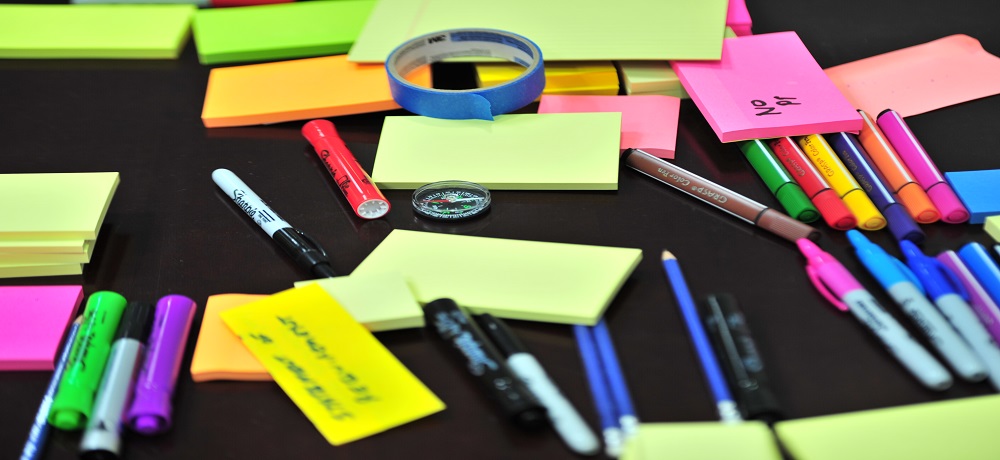 Emma Burnett, an Information Consultant at Royal Holloway, University of London, and a member of the CILIP Information Literacy Group’s Comms team, has shared a post (with permission) that was originally published on the CLA HE blog in October 2021. In this post, Emma talks about how the Royal Holloway’s Academic Liaison team created an information literacy teaching framework in 2019 and how they have been using it since then.
Emma Burnett, an Information Consultant at Royal Holloway, University of London, and a member of the CILIP Information Literacy Group’s Comms team, has shared a post (with permission) that was originally published on the CLA HE blog in October 2021. In this post, Emma talks about how the Royal Holloway’s Academic Liaison team created an information literacy teaching framework in 2019 and how they have been using it since then.
The starting point
In 2018, CILIP launched a new definition of information literacy, which defined it as “the ability to think critically and make balanced judgements about any information we find and use. It empowers us as citizens to reach and express informed views and to engage fully with society.” The brochure that accompanies this definition demonstrates the relevance of information literacy in a wide range of contexts and the importance of information professionals in advocating it.
The need for a framework
At Royal Holloway, the Library’s Academic Liaison team is formed of Information Consultants who teach students how to find, use, evaluate, reference and communicate information. We identified a need for an information literacy framework to showcase the teaching that we provide and how this could benefit the students in their studies and beyond. The team found that information literacy skills teaching varied widely between departments, with some having embedded content throughout their degrees and others having none, plus everything in between. Royal Holloway was about to move to a new School structure and we thought this would be a good opportunity to encourage more consistency in departments’ approach to information skills teaching.
Creating a framework: the process
In early 2019, I started working on an information literacy teaching framework with my colleague Greg Leurs. Greg and I are both Information Consultants within the Academic Liaison team. Greg has a particular specialism in digital and online teaching. I have had an interest in information literacy for many years and have been involved with the Information Literacy Group, first as their Marketing Officer and currently as a member of their Comms sub-committee.
Greg and I started by looking at other information and digital literacy frameworks, for example ANCIL, the Open University DIL Framework, SCONUL 7 Pillars Digital Literacy Lens, the University of Sheffield’s IDL Framework, and the Information Literacy Framework for Wales. We looked at each one in turn and discussed which elements we felt would work with what we hoped to achieve. We decided to keep it simple, concise and to produce something that would show why information literacy skills are so important. After discussing different options, we opted to have four strands in the framework: discovering, evaluating, referencing and communicating. Each strand contains two or three sub-sections, which show how understanding and learning in that area might develop as a student progresses in their academic journey.
We were aware that the term information literacy is not widely understood outside of the library profession. We chose to keep the term in our framework title as it is used in a lot of academic literature. However, we were very keen to make sure the framework wasn’t a library document full of jargon and assumptions that would obscure its prime purpose. We therefore worked on it with colleagues from other services, particularly Jane Angell from the Careers Service who provided a lot of advice and support. The framework includes a “benefits to students’ academic studies and employability” column, which gives examples of the importance of information skills in the workplace. We also sent the draft to academics, who highlighted any points that were unclear. Our Academic Liaison team colleagues also provided their comments and feedback. We were very grateful for this feedback and it fed into the final version.
It took about 4 months to produce the framework. Royal Holloway’s Design Studio kindly sent our file to one of their graphic designers, who made it into a more visually appealing PDF.

Cropped version of Royal Holloway’s Information Literacy Teaching Framework. The full version can be found on our website.
How we have used the framework
Since the creation of the framework, the Information Consultants in the Academic Liaison team have used it in conversations with academics around the value of embedding information literacy into their programmes. We also use it in a session run for teaching staff working towards fellowship of Advance HE. We run through the framework and then have an activity where participants consider how they could incorporate information skills teaching into their modules.
Once of the key projects that the framework has informed is a major overhaul of our Library Moodle pages. This project, led by Greg Leurs, has dramatically transformed the content on these pages by including videos, quizzes, and other interactive elements. The structure of the pages directly aligns to the 4 strands of the framework: discovering, evaluating, referencing and communicating.
Get in touch
If you would like to find out more about the Framework, please send Emma an email.
Find more frameworks!
Visit the Models and Frameworks section of this site to find many more. If you have a framework you would like us to include, please let us know.



